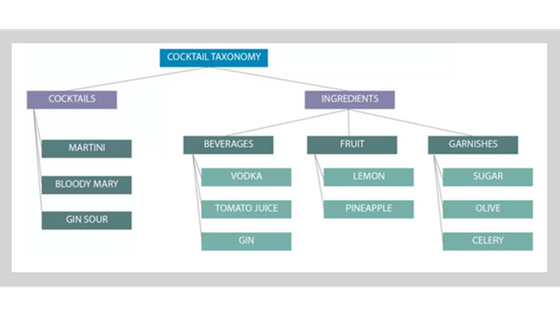Here at Enterprise Knowledge (EK), we design systems which allow your employees and your customers to actually find the information they’re searching for.
- Do your employees need to find the subject matter expert in your organization who has the perfect blend of technical knowledge, and the willingness to be a mentor?
- Do your customers need to find exactly the right product which meets all of their criteria?
Planning out the information you need to capture about a product, a document, or even a person – and how you’ll organize all of that information – is important to optimize findability. In order to do this, we analyze your content, talk to your users, and help you identify which Knowledge Organization System (KOS) best meets the needs of your organization. The following are five commonly used Knowledge Organization Systems, ordered from simplest to most complex.
KOS 1: Folksonomy
A folksonomy is an opportunity for users to “tag” your content with any term they like. There is no pre-defined list of terms.

A folksonomy is implemented by offering users a field in which to type any tag they’d like.
KOS 2: List
A list is one step up from a folksonomy. It is a non-hierarchical, pre-defined list of terms from which users may select when tagging content. Lists of months or states are common examples.

As shown here, states are commonly organized into lists.
KOS 3: Taxonomy
A taxonomy is incrementally more complex than a single list. In a taxonomy, content can be described by selecting values from pre-defined terms in flat and/or hierarchical relationships. Multiple lists are organized by categorizing terms in parent/child relationships. EK has written a lot about taxonomies and we frequently help our clients get started via our Business Taxonomy Workshop. We have further defined taxonomies in this presentation to the Knowledge Management Institute’s KM Symposium.

In this example, there are three terms in the “garnishes” taxonomy.
KOS 4: Thesaurus
A thesaurus consists of predefined terms and equivalent terms in hierarchical relationships. If we search for sweetener, we may find it is a synonym of sugar, and therefore still classified as a garnish – even though it’s not explicitly listed in the parent/child relationship under garnishes.
 A thesaurus KOS gives us the ability to identify sweetener as a garnish – because it’s a synonym of sugar.
A thesaurus KOS gives us the ability to identify sweetener as a garnish – because it’s a synonym of sugar.
KOS 5: Ontology
In an ontology, we capture relationships as we did with the thesaurus, but we’re no longer restricted to simply defining synonyms. Ontologies give us the ability to capture relationships between terms. For example, we might have two terms from the thesaurus and taxonomy above: Gin and Gin Sour. In an ontology, we would define the relationship between those two terms as Gin is an ingredient of Gin Sour.

In an ontology, we define relationships between the terms in the hierarchy.
Still confused about ontologies? Don’t worry – it takes a while to comprehend the possibilities. There’s some more detail about the definition and benefits of an ontology in this recent EK blog.
What’s the Difference?
Again, our goal as knowledge managers is to design and effectively utilize systems which allow our end users to actually find the information they’re searching for. How do you decide which Knowledge Organization System is going to help you best accomplish this goal? Contact EK for help.
